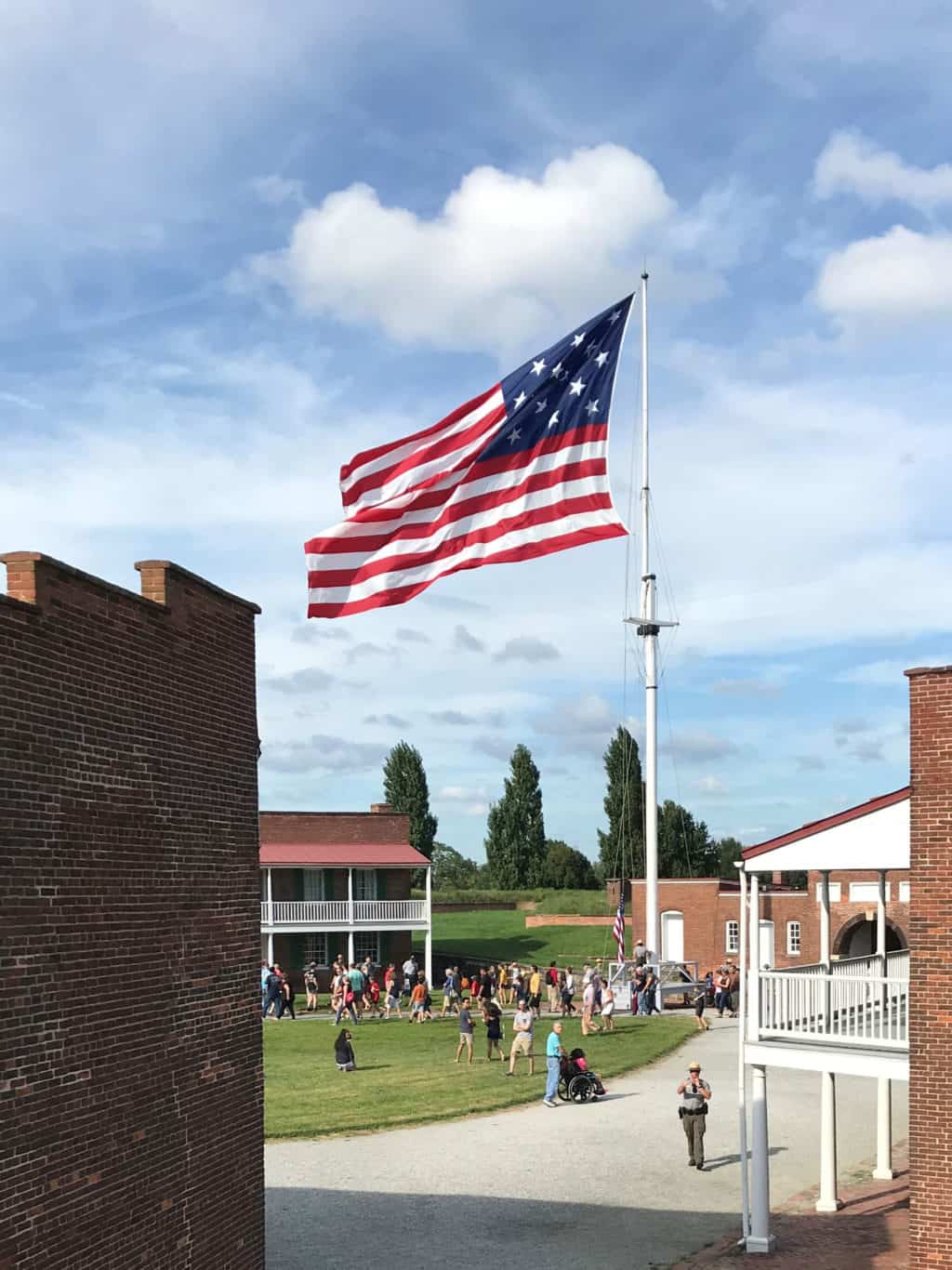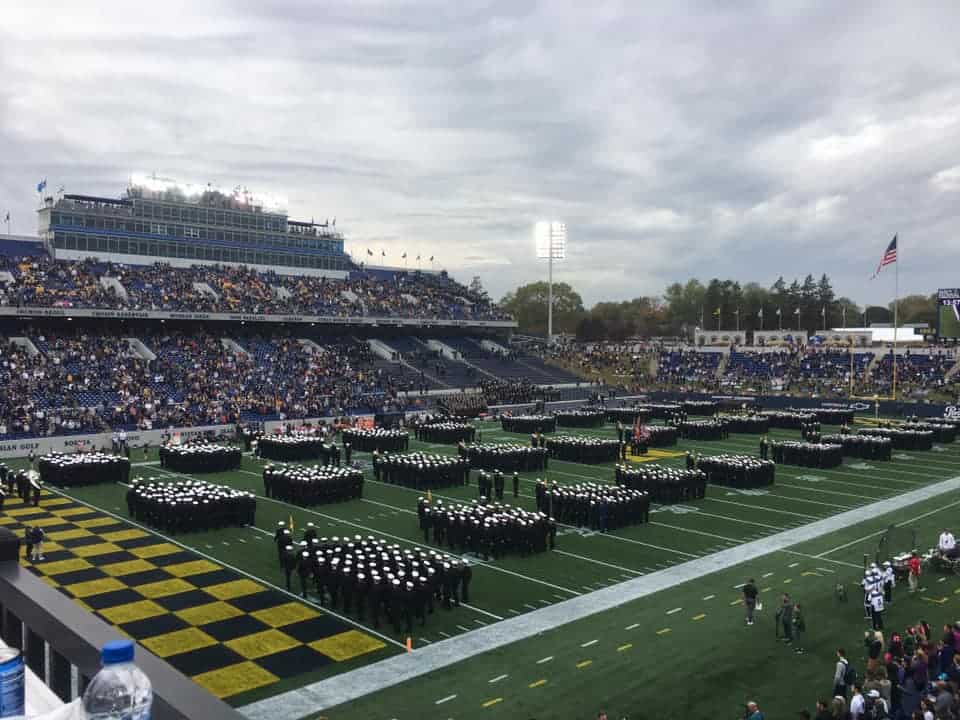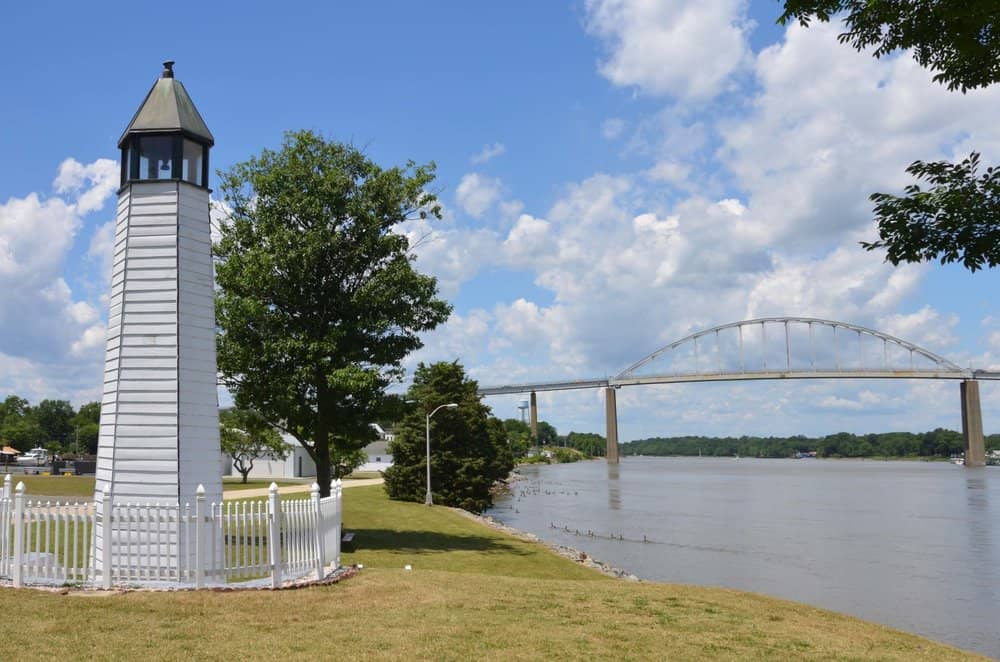The birth of an anthem at the Battle of Baltimore
On the night of September 13, 1814, Francis Scott Key found himself in a place he never expected to be—held captive behind enemy lines and forced to watch the British attack Baltimore’s Fort McHenry from a front-row seat.
At some point in school, most American students learn that Key was watching the battle unfold, anxious during the night as to which side was winning. At first light of morning, he breathed a sigh of relief to see the stars and stripes still flying over Fort McHenry. Inspired at the sight, he penned a poem that became the words to our national anthem.
“O, Say Can You See?” is one the most familiar five-word phrases in America. Yet, many Americans are only vaguely aware of our national anthem’s origin story. They cannot correctly identify the setting or the war: the War of 1812 (a confusing name since the war lasted from 1812-1815). While most of the world’s national anthems are about the virtues of a nation’s people, America’s is about a historic event that took place in the Chesapeake Bay region: The Battle of Baltimore in 1814.
Like many Americans, Key had been adamantly opposed to what he called “this abominable war,” which President James Madison had declared in 1812. Key was a lawyer practicing in Georgetown, a port on the Potomac River near the new national capital, but as the British began to terrorize the inhabitants of the Chesapeake Bay area, he decided that he needed to defend his growing family of six and his country. He’d briefly served in a local militia and was embarrassed by the Americans’ lackluster defense of Washington.
During the course of the British attack on Washington, the enemy captured a local doctor, William Beanes, a friend of Key’s. They took him to their ships and held him prisoner. Beanes’s friends tried various actions to obtain his release, then as a last resort received permission from the president to negotiate directly with the British military leadership. They needed someone very persuasive and thought of Key. He had argued cases in front of the Supreme Court and his oratory skills were widely acclaimed. Key agreed to the mission, traveled to Baltimore, and boarded the truce ship which would attempt to find the British fleet somewhere in the Chesapeake.
Prisoner negotiation was common during wartime, but it included some risk. Beanes, as a civilian, should never have been captured, and there was a chance that Key, too, could be detained.
Key’s party finally found the HMS Tonnant, the flagship of the fleet, whose crew welcomed them on board. Vice Admiral Alexander Cochrane invited him to join the officers for lunch, a standard courtesy. Cochrane was the highest-ranking British officer in North America, responsible for military strategy. He hated Americans for various reasons; he called them a “corrupt and depraved race.” They had killed his brother at the Battle of Yorktown, they were inhumane to their slaves, and they had treated his loyalist in-laws horribly. Also at the table was Rear Admiral George Cockburn, a man who, before Cochrane had arrived, had led raids on towns around the Bay and had damaged much personal property. The American press dubbed him the “Great Bandit,” and Americans despised him. Key never expected to be eating with the enemy.
Then, to Key’s surprise, the British quickly agreed to release Beanes with little negotiation, and Key prepared to head home. But Cochrane had just approved an attack on Baltimore. Originally intending to sail to Rhode Island, Cochrane had suddenly changed his mind. Key was there at a crucial moment and would have seen preparations underway for the attack. He had overheard some of the plans, so Cochrane had to hold him to keep his secret safe.
Why Baltimore? The British called it a nest of pirates. Shipbuilder Thomas Kemp, owner of one of the most famous shipyards in Fells Point, was one reason. The city’s privateers had harassed and captured British ships, damaging the British economy. Kemp’s fast schooners, including his most famous, the Chasseur, gained a reputation across the nation.
Key was stuck. He had no way to alert the Americans, and he feared what a British capture of Baltimore would mean to the new country and to America’s third-largest city. In a letter he later wrote to a friend, Key mentioned his anxious state during the bombardment. At dawn the following day, when he finally confirmed that the Americans had held the fort and the city, his relief poured into poetry. While still a captive, he took out an envelope and began scribbling the words to the famous song.
Key spoke publicly only once about his feelings in the moment: “In that hour of deliverance and joyful triumph, the heart spoke. Does not such a country and such defenders of their country, deserve a song? With it came an inspiration not to be resisted and if it had been a hanging matter to make a song [I] must have made it.”
Key’s object of inspiration was an American flag. Mary Pickersgill, a businesswoman who sewed the stars and stripes, never knew her handiwork would one day become one of America’s national treasures.
The British finally released Key and he finished his poem at a Baltimore hotel. His friends were so impressed with it that, with his permission, they took it to a printer. Gradually, it appeared in newspapers up and down the East Coast. On October 12, 1814, the Holliday Street Theater in Baltimore presented the first public performance of the song with its new name, “The Star-Spangled Banner.” It did not become America’s official national anthem until 1931, long after Key had died.
History is fickle. Key’s story has managed to live on in history books, yet other stories fade to obscurity. Most people don’t know of Cochrane, Cockburn, Kemp, or Pickersgill, but their motivations and actions greatly affected the story. The true hero of the day is also lost to history. General Samuel Smith, an illustrious Maryland politician, led Baltimore’s defense. His planning and coordination saved the city. Though his funeral was the largest Baltimore had ever seen up to that time, his grave in Westminster Cemetery in Baltimore is overshadowed by the nearby grave of Edgar Allen Poe. The Colonial Marines, a British regiment of formerly enslaved men who fled to the British for freedom, trained on Tangier Island and fought at Washington and Baltimore. They ended up living free in Trinidad.
Despite their absence in history books, the many people who played a part in the story of America’s national anthem have a story worth telling. And, there is always more to the story.




